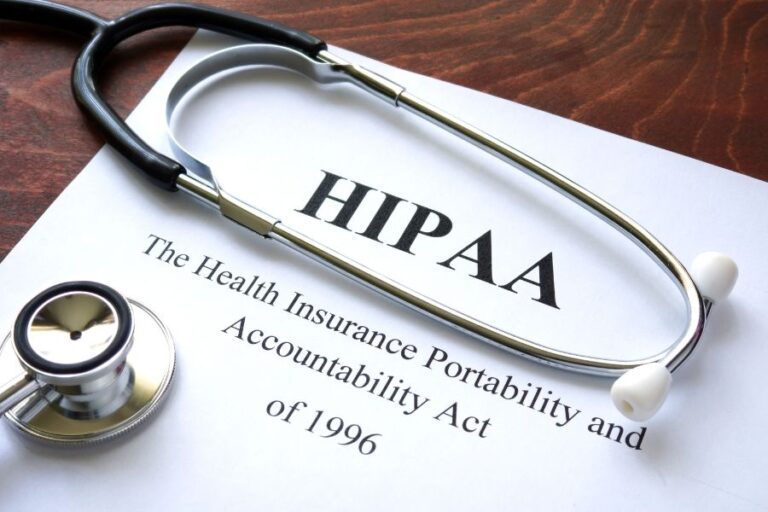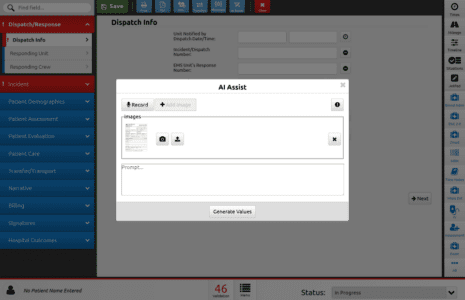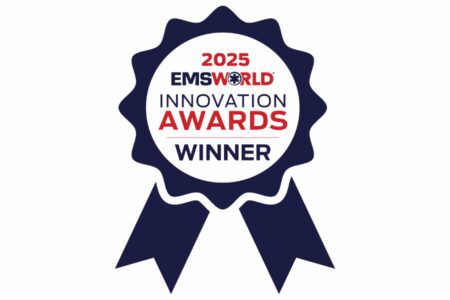Anyone working in or adjacent to healthcare has heard of HIPAA. The Health Insurance Portability and Accountability Act of 1996 established federal standards for the protection and integrity of private, individually identifiable health information by “covered entities.”
Originally, the law was created to protect the medical privacy of people switching health insurers during a change in employment and those with pre-existing conditions. As health information increasingly began being collected, stored, and transmitted electronically, further standards were created, known as the HIPAA Security Rule and HIPAA Privacy Rule.
These standards can cause challenges for EMS providers, who as “covered entities” under HIPAA, are required to safeguard protected health information (PHI) according to these standards. This includes using mobile devices and communicating with other providers or public safety agencies—all during fast-paced, often chaotic situations.
However, HIPAA compliance also offers EMS agencies operational benefits. Compliant technologies support data interoperability and faster information sharing with other providers, contributing to better patient outcomes and increased efficiency. HIPAA standards around online and offline communication can also foster inter-agency trust by ensuring the confidentiality and security of patient information.
Understanding the impact of HIPAA on emergency services can help EMS teams and leadership establish processes that ensure compliance while allowing them to collect and share critical information that helps them do their job and contribute to positive outcomes.
Challenges EMS Agencies Face with HIPAA Compliance
Although the value and importance of HIPAA are clear, the regulations can be complex. Some compliance challenges include:
- Mobile data security: EMS teams often use phones, tablets, and laptops to document and access health data and to communicate with hospitals and other providers. These devices can be vulnerable to data breaches if their security settings don’t meet HIPAA standards.
- Information sharing with other providers: While HIPAA allows providers to share vital information in emergencies, navigating the rules regarding PHI to hospitals and other healthcare facilities can be challenging.
- Documentation and reporting: HIPAA requires specific standards in this area during emergencies and as part of everyday operations.
- Accounting, billing, and other paperwork: HIPAA requires that any software used for these functions meets security and privacy standards to protect patient health information.
Examples of EMS HIPAA Violations
EMS teams sometimes face unintentional challenges with HIPAA compliance. Examples of potential violations include:
- Patient photos on personal devices: Taking photos of a patient can serve legitimate purposes, such as documenting an injury’s nature. However, using a personal phone for this is not HIPAA-compliant. Misuse of photos can lead to serious consequences: a paramedic in Florida received a six-month jail sentence for taking unauthorized “selfies” with patients.
- Sharing PHI on social media: Posts about incidents, treatments, or patients may inadvertently include sensitive details, violating HIPAA rules.
- Failure to conduct a compliance risk analysis: HIPAA requires analyzing cybersecurity risks. Neglecting this can expose patient privacy to breaches and lead to fines, as evidenced by a $90,000 penalty issued to an EMS provider in Oklahoma following a ransomware attack.
Strategies to Address HIPAA Challenges in EMS
EMS agencies should take steps to reduce the risk of HIPAA violations and maintain compliance. Some are basic security safeguards, while others may require more planning and resources.
- Implement secure policies and protocols for secure data sharing: At a minimum, EMS agencies should require strong passwords, ensure data is encrypted in storage and during transmission, and review user access to software platforms annually to limit unauthorized access to patient PHI. Technology platforms like ImageTrend Elite help EMS agencies keep patient data safe and protected during collection, analysis, and reporting, while the Health Information Hub secures PHI during transmission between EMS agencies and hospitals.
- Conduct regular risk assessments: As mentioned previously, risk assessments are required by HIPAA, but they can also help EMS agencies identify and address potential vulnerabilities. For example, an assessment may reveal that medical monitoring equipment does not have adequate data security safeguards.
- Develop robust guidelines for information sharing and data security: Make sure teams understand the rules around texting or taking photos that share patient information. Create and implement protocols for disclosing PHI to other healthcare providers as well as non-medical entities such as the police and insurance companies. There should also be clear policies on securing mobile devices at all times and the proper disposal and deletion of PHI.
- Institute regular training sessions: Ongoing training and education is a core aspect of information security, and it applies here as well. Scheduling regular EMS HIPAA training helps team members retain compliance requirements and fosters a culture of data security and patient privacy.
Another consideration for EMS agencies is understanding how HIPAA applies to data exchange. While HIPAA establishes important safeguards for patient privacy, it also allows for secure information sharing between EMS and healthcare providers when done in compliance with its standards.
A report from NEMSIS explores how HIPAA supports, rather than hinders, appropriate data exchange, helping agencies navigate compliance while ensuring continuity of care.
Does HIPAA Apply to Fire Departments?
Fire departments may mistakenly think they are exempt from HIPAA. However, the law applies if they provide emergency services or conduct electronic transactions like billing for medical services.
Even if a fire department is not considered a covered entity under HIPAA, it may be subject to state laws regarding the release and management of PHI. Fire departments should research both federal and state requirements and implement the appropriate training, education, and protocols.
Expanding Compliance to Community Health Programs
Community paramedicine and EMS partnerships with public health agencies are other areas where HIPAA compliance is likely necessary since both can share PHI with multiple parties, such as social services agencies and hospitals. These organizations may want to consider appointing staff members to be responsible for implementing and managing HIPAA privacy and security.
Some community health programs may face financial constraints or a lack of expertise that can prevent them from taking steps toward compliance. In such cases, they can look for grants or apply for assistance from larger organizations that can offer technical and financial support. They may also hire an external business to implement HIPAA-compliant practices and systems on their behalf and then manage them internally.
Myths About HIPAA
Even though HIPAA has been around for nearly 30 years, misunderstandings are common. These are a few of the biggest myths:
- Myth #1: EMS agencies may not discuss private health information with others even if they are involved in that patient’s care. In a situation where a patient is not able to grant permission, such as during a health emergency, a provider can share information with family, friends, or others involved in their care if they believe it is in the patient’s best interests.
- Myth #2: HIPAA restricts the use of technology to store and transmit PHI data. Covered entities may still use platforms and devices to collect and share patient information, but they must implement sufficient cybersecurity measures.
- Myth #3: Under HIPAA, providers may not discuss patient claims with insurance companies. Providers can communicate with insurers for payment, but they can only share information necessary to process a claim.
Proposed Changes to HIPAA Security Rule
The Department of Health and Human Services (HHS) has proposed significant updates to the HIPAA Security Rule, marking the most substantial changes in over a decade. These revisions aim to modernize cybersecurity standards in response to evolving digital threats and increased incidents of data breaches involving PHI.
If implemented, the changes could introduce more defined security measures, including:
- Requiring encryption of electronic PHI (ePHI) both at rest and in transit, with limited exceptions.
- Eliminating the distinction between “addressable” and “required” safeguards, making previously optional security measures mandatory.
- Establishing more structured risk assessments, including network mapping and asset inventory updates every 12 months.
- Implementing multi-factor authentication and conducting vulnerability testing at regular intervals to strengthen cybersecurity.
A full overview of the proposed updates is available in the Federal Register. EMS agencies and healthcare organizations may want to monitor these developments to understand potential compliance impacts.
HIPAA and EMS: The Need to Keep PHI Secure
Since EMS teams work in high-pressure, fast-moving situations, it’s even more essential that they use HIPAA-compliant processes, systems, and devices. Performing risk assessments, providing regular training, and implementing protocols and guidelines for sharing PHI online and in the real world can help EMS leaders ensure their agencies maintain compliance at all times.
ImageTrend’s platform for EMS providers supports HIPAA compliance by simplifying data-sharing and promoting interoperability among providers. Our solutions can help EMS agencies manage large amounts of patient data, navigate multiple software systems, and reduce the risk of human error that may compromise patient privacy and data security.
Reach out to learn more about how we can help your agency comply with HIPAA standards and requirements during patient care handover, billing, and more.
This article is not intended to be legal advice or advice regarding compliance with HIPAA. Please discuss with a qualified attorney to determine your specific needs.




